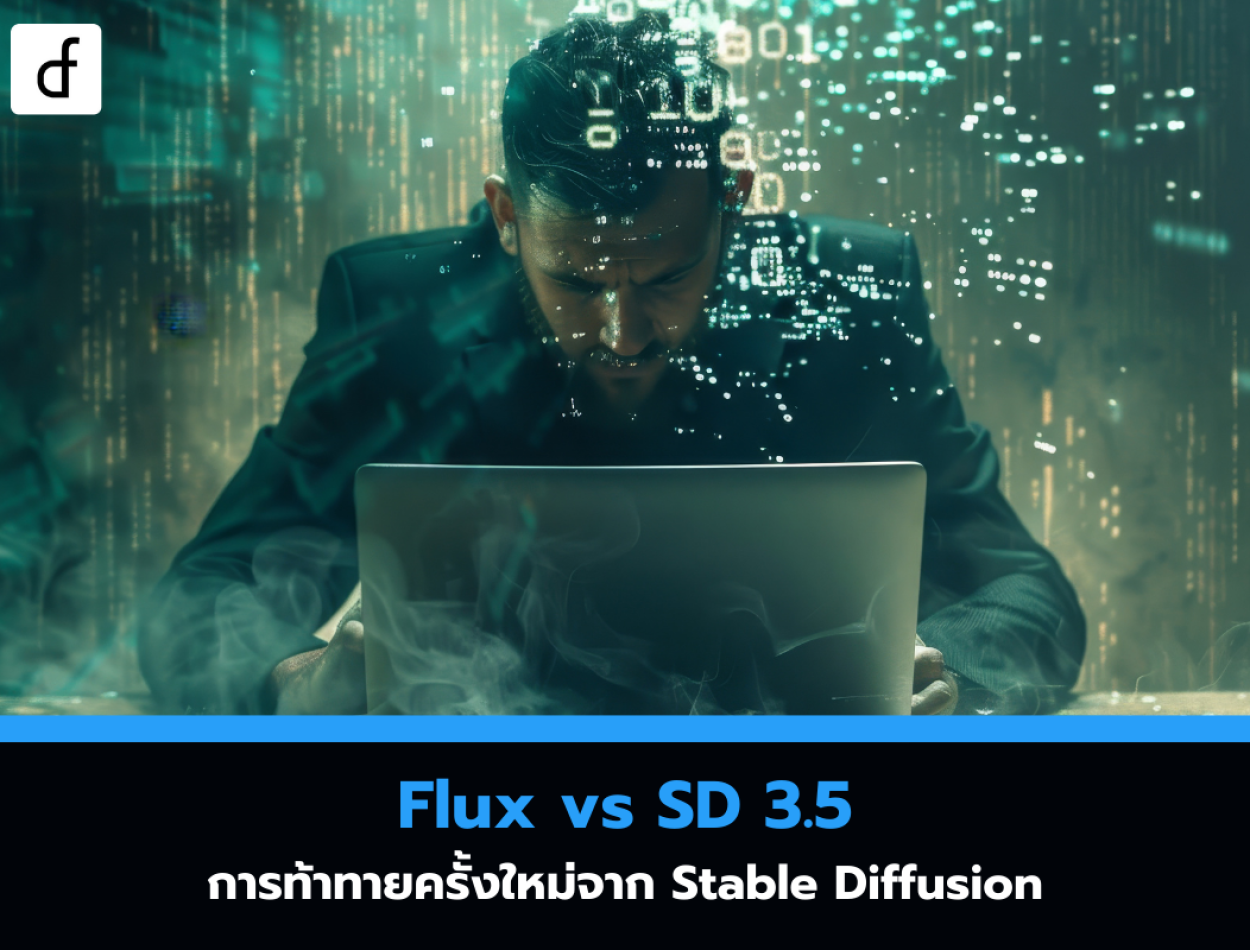
Flux vs SD 3.5: A New Challenge from Stable Diffusion
2024-11-14 10:18:13
In the field of AI image generation, Stable Diffusion is currently one of the most popular and widely used models, known for its ability to create high-quality images from text prompts. The latest version, Stable Diffusion 3.5, has further enhanced its image generation capabilities to produce even more realistic details. However, a new competitor calling itself Flux has recently emerged, challenging Stable Diffusion in terms of AI image generation capabilities and efficiency. This marks a significant battle in the AI Art industry.
This article will delve into the comparison between Flux and Stable Diffusion 3.5 to see how this challenge will lead to changes in the future of AI image generation.

Features and highlights of Stable Diffusion 3.5
Stable Diffusion 3.5 has been developed to meet the needs of users who require high-quality images in a short amount of time. It includes several improvements over the previous version, both in terms of accuracy and processing speed. The highlights of SD 3.5 include:
- More realistic image quality: SD 3.5 uses detail enhancement techniques and light and shadow management that make images appear more dimensional, realistic, and of much higher resolution.
- Support for writing complex prompts: Stable Diffusion 3.5 can process commands or prompts with multiple layers of detail and intricate descriptions effectively, making it suitable for creating images that require high complexity.
- Faster and sharper image generation: This version has been developed to process faster than before, while also enhancing sharpness and reducing distortion in image details.
- Stable Diffusion 3.5 has been developed with improvements to the Stability AI model, making images more realistic and better at responding to complex commands. This allows users to easily create high-quality images with complete details.
Features and highlights of Flux
Flux is a new model developed to compete with Stable Diffusion, focusing on creating highly realistic images while supporting real-time interactive image generation. This could be a significant advantage of Flux. The interesting features of Flux are as follows:
- High-level realism (Hyper-Realism): Flux is designed to manage light and shadow in a way similar to photography, resulting in highly realistic images. This includes handling small details such as wrinkles in clothing and reflections in the eyes, which add naturalness to the images.
- Real-time interaction: Flux can respond to prompts and improve images in real-time, allowing users to adjust prompts during the image creation process. This makes the image creation process much more flexible and faster.
- New techniques for creating images from multiple styles: Flux efficiently supports the blending of different styles together, making it suitable for creating images that require a multi-dimensional appearance, such as combining fantasy styles with high realism.
Comparison between Stable Diffusion 3.5 and Flux
This challenge is very interesting because both models have different capabilities and features.
| Features | Stable Diffusion 3.5 | Flux |
| Realism | High realism with improved lighting and shadow management | Highly advanced realism |
| Image generation speed | Faster than the previous version | Supports real-time interactions |
| Support for complex prompts | Support complex commands efficiently. | Supports commands with instant image adjustments. |
| Style blending | Can create images in various styles but does not focus on style blending. | Can mix various styles with high realism. |
| Flexibility in customization | Supports detailed Prompt Engineering. | Can adjust the prompt in real time. |
Strengths and considerations of both models
- Stable Diffusion 3.5 remains a popular choice for generating highly realistic and detailed images and is suitable for those who want to use complex prompts to control image details. Additionally, this model is widely used and supported by a large community of users.
- Flux stands out with its real-time responsiveness, which is something Stable Diffusion lacks. This makes Flux an attractive option for image generation that requires quick customization and interaction. Additionally, the highest level of realism in Flux is suitable for tasks that demand true naturalness, such as portraits or artistic designs that require high detail.

Summary: The potential of Stable Diffusion 3.5 and Flux
Stable Diffusion 3.5 remains a model that meets the needs of traditional image generation and performs well in terms of quality and resolution. However, Flux has introduced interesting capabilities in terms of flexibility, real-time interaction, and superior realism. This challenge not only encourages Stable Diffusion developers to improve their model but also provides an opportunity for Flux to differentiate itself and develop in the market.
Leave a comment :
Recent post

2024-05-31 03:06:49

2024-05-28 03:09:25

2024-05-24 11:26:00
Tagscloud
Other interesting articles
There are many other interesting articles, try selecting them from below.

2024-09-17 11:15:06

2023-12-27 03:45:41

2023-11-23 10:27:28

2024-05-10 01:34:44

2024-10-18 02:43:35

2024-01-15 04:13:20

2024-03-12 02:47:11

2023-12-07 04:11:15

2023-11-02 11:11:27
